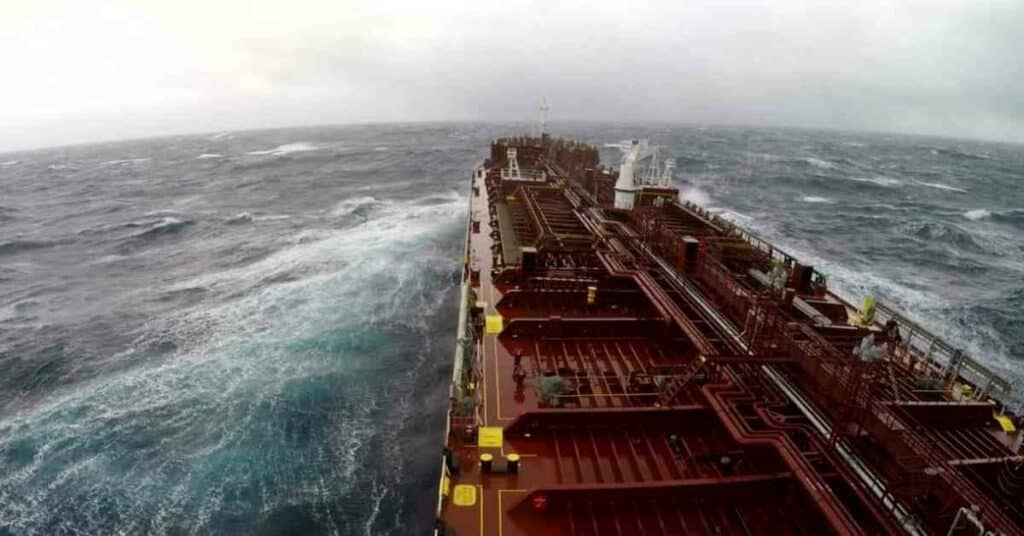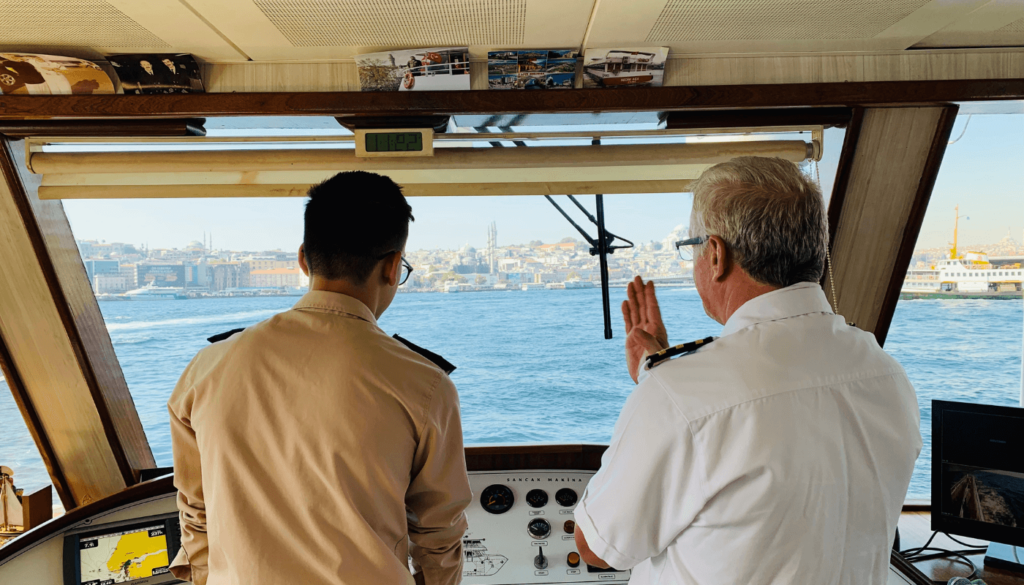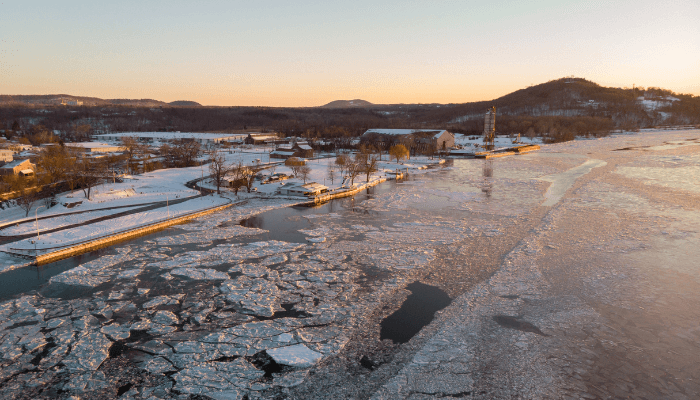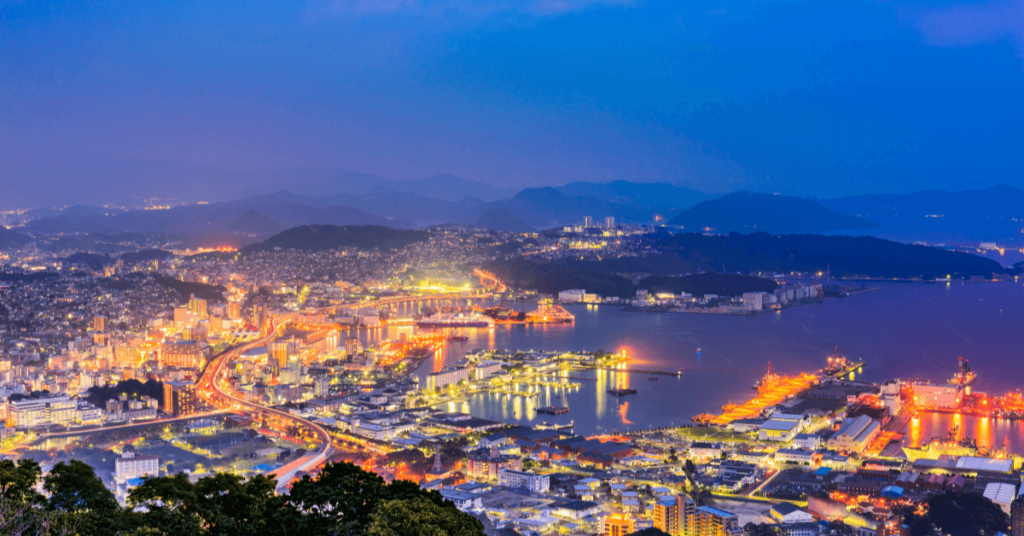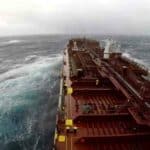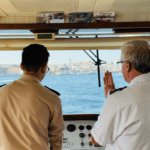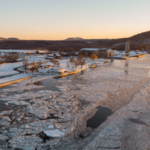The Saltiest Sea in the World – 16 Facts You Might Not Know
The Dead Sea is actually a salt lake that is surrounded by Jordon from the eastern side and the Western Bank and Israel from the west. It is located in the Jordon Rift Valley, with the main tributary being the Jordon River.
It lies within the desert and is far from major cities; however, the town of Arad is 40 km away, but the closest main city is Jerusalem, an hour’s distance from the Dead Sea.
The Dead Sea is an intriguing natural water body mentioned in ancient inscriptions and manuscripts as a place possessing healing powers. Its waters are laden with many rare minerals and nutrients.
Hence it is visited by people from all over the world. It is surrounded by stunning landscapes, which also add to its popularity.
Read along to know more about this saltiest sea in the world.
1. Dead Sea is one of the saltiest water bodies on our planet
The Dead Sea is one of the saltiest water bodies, with 10 times more salt than normal seawater. This is because water enters the Dead Sea from one of its main tributaries, the Jordon River. However, it does not get out due to its low elevation and evaporates quickly, leading to intense salinity.
The hot and dry weather evaporates large amounts of water, making salt and minerals highly concentrated. It is said that the entire Dead Sea has about 37 billion tonnes of salt in it.
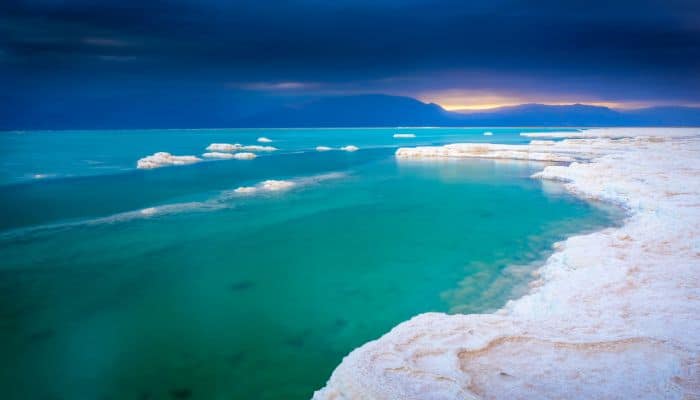
The Dead Sea has a salinity of 34.2%, whereas the Mediterranean Sea has a salinity level of just 3.5%. It is the deepest hypersaline lake in the world, 380 meters deep and has roughly 40 billion gallons of water.
It is 9.6 times as salty as the ocean, and its main northern basin is 50 km long and 15 km wide at its widest point.
However, some other smaller water bodies are even more saltier than the Dead Sea. These include Antarctica’s Don Juan Pond, Lake Vanda and Djibouti’s Lake Assal.
2. Dead Sea is a natural spa on earth
The Dead Sea contains beneficial minerals and salts, giving it powerful natural healing qualities. It has electrolytes like chloride and bromide and 26 other minerals in its water. Chloride keeps cells in the body balanced, while bromide is a natural sedative.
Due to these properties, the Dead Sea has become a destination for people wanting to treat skin conditions like acne, psoriasis and cellulite.
Other medical conditions like arthritis, muscle ache and asthma can also be treated by the water of the Dead Sea. Additionally, the oxygen rate is five per cent higher than the surrounding area, which enhances rejuvenation and healing in the body.
Apart from the water, the black sea mud is also beneficial since it is small enough to penetrate the skin’s pores. It exfoliates, detoxifies and nourishes the skin.
A black mud facial can tighten skin pores, treat acne, reduce skin impurities, treat vitiligo and improve psoriasis. It also improves blood circulation, smoothes out wrinkles and rejuvenates the skin, promoting a healthy glow.
3. Cleopatra liked to bathe in the waters of the Dead Sea
The healing waters of the Dead Sea have been sought after since Biblical times. King Herod, or Herod the Great (37-4 BC), constructed one of the world’s first spas along its shores.
The Masada National Park at the edge of the Judean desert in Israel is a UNESCO World Heritage Site today. However, it was once a fortress built by King Herod, who loved staying at the winter palace complex with a Roman-style public bath called a caldarium.

The famous Cleopatra VII also visited this natural spa to enhance her beauty. She travelled over 400 miles just to bathe in the waters of the Dead Sea, and some even say that through Mark Antony, she got “exclusive rights over the Dead Sea region.”
It was a famous trade route since Greco-Roman times, and ships regularly crossed its waters. Salt was the main commodity traded around the sea, along with agricultural produce from farms along the Jordon River.
4. Floating in the Dead Sea is a unique experience
People visit the Dead Sea to know how floating on the water’s surface feels. It is truly once in a lifetime experience. Due to higher salt concentrations, the water here is much denser than normal seawater, making the body lighter and causing it to float.
Swimming in the Dead Sea is almost impossible, and floating in its waters after exploring the top sights is quite relaxing. However, it is still possible to drown in the Dead Sea if one is caught in strong winds and flips over, suddenly swallowing the salty water. Hence, it is advised to go to proclaimed beaches in the presence of a lifeguard.
Diving in the Dead Sea is something which only a few can try since it requires extraordinary skills. Such a person can expect to see spectacular geological salt formations on the seabed.
Interestingly, one can stand on the Dead Sea banks in Jordon and view Israel’s West Bank and vice-versa. It is a myth that one can see Jerusalem or Tel Aviv from its banks since they are 100 km away.
5. Dead Sea is the lowest point on earth
Apart from being incredibly salty, the Dead Sea is also known for being the lowest point on Earth. Its surface is around 423 m below sea level and continues to drop by one metre annually.
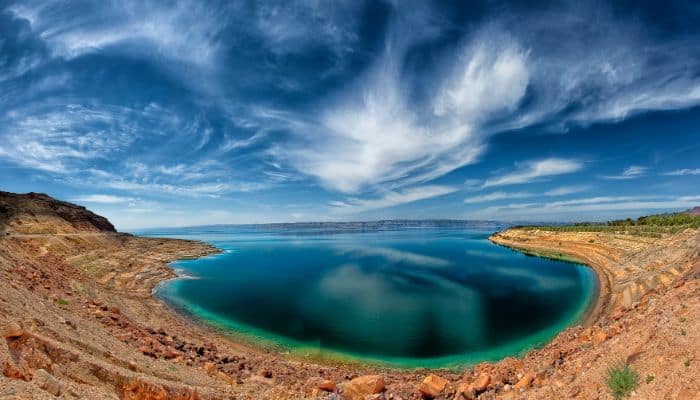
This is thought to be the consequence of volcanic processes leading to the gradual dropping of land.
Sunbathing on its shores has less risk of sunburn than in other locations. This is because it is below sea level, and harmful UV rays are filtered through the natural layers, an extra atmospheric layer, which is an evaporation layer above the Dead Sea and a thick ozone layer. However, it is still recommended to wear sunscreen.
6. Dead Sea was once part of the Mediterranean Sea
The Dead Sea was once part of the Mediterranean Sea. It is due to the African and Arabian tectonic plate movement that the Dead Sea was created 3 million years ago.
Around 3.7 million years ago, the region known as Jordon River Valley was flooded by Mediterranean Sea water that formed the Sedom Lagoon. It connected to the sea through the present-day Jezreel Valley.
Then, about 2 million years ago, the land between the lagoon and the Mediterranean Sea rose to the extent that the sea could no longer flood the area and created a landlocked lake.
7. World’s lowest road runs along the shores of the Dead Sea
Israel’s Highway 90 is the world’s lowest road running along the western shores of the Dead Sea. It is around 393 m below sea level and starts further north at Metul, along the Lebanon border and goes along the western coast of the Sea of Galilee.
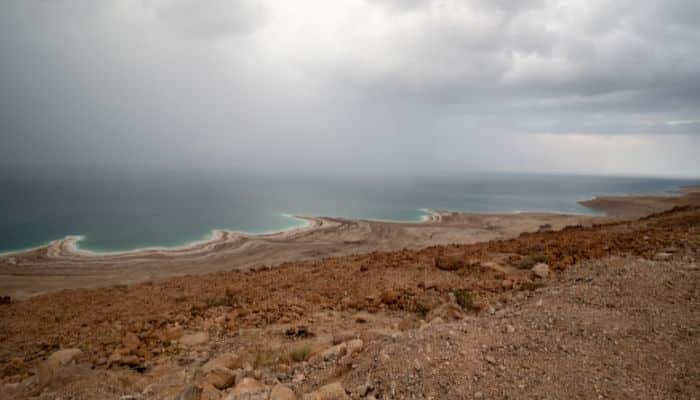
Then it runs through the Jordon Valley before it passes by the Dead Sea, then south near the Egyptian border, with a distance of 480 km.
Another road, Jordan’s Highway 65, runs parallel to the eastern shores of the Dead Sea. It begins south on the Gulf of Aqaba, then runs past the Dead Sea through the Jordon River before culminating at Irbid.
8. Dead Sea features in many Biblical events
The Dead Sea finds a few mentions in the Bible and has been linked with mysticism and great religious significance.
For instance, before Israelis left Egypt in the Exodus, the Bible stated that people lived in caves around the Dead Sea. Jericho is northwest of the Dead Sea, and the cities of Sodom and Gomorra were on its southwestern shores. King Saul of Israel once avoided his enemies by hiding in the oasis of Ein Gedi.
One famous story mentioning the Dead Sea is the tale of Lot’s wife set in Sodom. The slopes of Mount Sodom lie in the southeastern corner of the Dead Sea and have salt formations that resemble pillars, traditionally referred to as Lot’s wife.
Then there is the Dead Sea prophecy, where the prophet Ezekiel foresaw a time when the Dead Sea would be transformed from saline waters unable to sustain life to fresh waters teeming with life.
9. Known by different names across cultures and periods
The name Dead Sea came to be used in modern times, and ancient literature used different names for the water body, such as Bahr or Bahr or al-Bahr al-Mayyit in Arabic or Yām HaMāvet meaning ‘Sea of Death’ in Hebrew. Most of these names emphasised scarcity and the inability of its waters to nourish and sustain life.
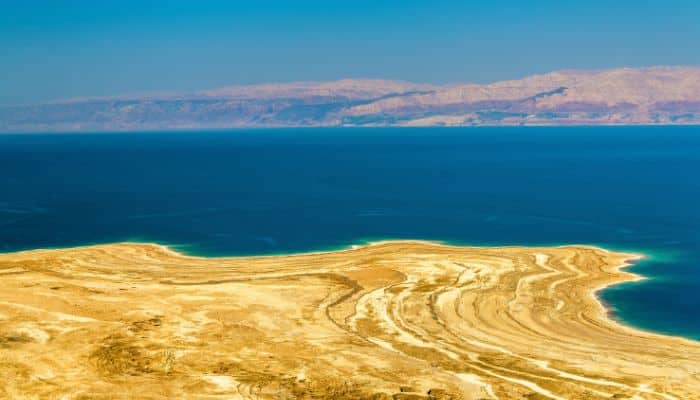
The Hebrews used other names for the sea as well, like the Sea of Salt, the Sea of the Arabah, and the Eastern Sea. It was also called the Sea of Zo’ar, after an abandoned town that once lay on its shores.
10. The Dead Sea has a hot desert climate
The Dead Sea and its surrounding region have a hot desert-type climate with clear skies, low humidity, and low rainfall throughout the year. Rainfall is only four inches in the northern part of the sea and barely 2 inches in the southern part.
The aridity here is a result of the rainshadow effect of the Judaean Mountains. The highlands lying east of the Dead Sea get more rainfall than the Dead Sea itself.
In summers, the average temperature remains between 32 and 39 °C, while in winter, it does not fall below 20°C.
The low elevation of this place also makes for a thicker atmosphere that decreases the amount of ultraviolet radiation reaching the ground. It also has a higher percentage of oxygen, about 5%, which is more than the normal oxygen content in the atmosphere.
11. Life sometimes does thrive in the Dead Sea
Due to high salinity, macroscopic life like fish and aquatic plants cannot survive in the Dead Sea; however, small amounts of bacteria and microbial fungi are found. However, in certain circumstances, when there is heavy rainfall, the salt levels in the waters drop below 30%, allowing life to thrive in its waters.
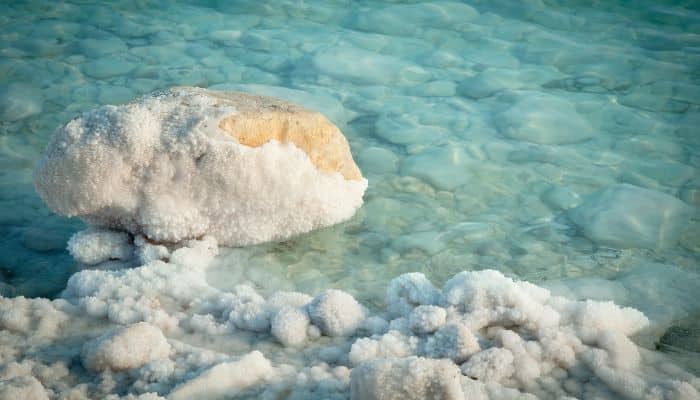
In the rainy winters of 1980, the usually dark blue waters of the Dead Sea turned red due to the growth of algae called Dunaliella, causing the colour change. Moments like these are ephemeral since the water evaporates and salt levels begin to rise once rains subside, killing the life that had briefly developed in its waters.
Since 1980, the Dead Sea has been dry, and the algae and bacteria have not been seen in large quantities.
Foxes, hyraxes, ibexes, jackals, rabbits, leopards and several bird species live in the surrounding area, leading Jordan and Israel to establish nature reserves around the Dead Sea.
12. Mystery of the Dead Sea Scrolls
Bedouin shepherds discovered the first 7 scrolls in jars at Qumran in 1946, eventually selling them to an antiquities dealer in Bethlehem. They came to academic attention in 1947, and after excavations began at Qumran in 1948-1956, more relics were found in 11 different caves.
In 2021 new relics were found, including a 6000-year-old grave of a child and a coin hoard.
Per scholars, only 40% of Dead Sea Scrolls’ texts became a part of the Bible, and another 30% are classified as apocryphal texts, such as the Book of Enoch, the Book of Jubilees, the Book of Tobit, and the Wisdom of Sirach.
It is said that these scrolls were hidden during the Great Jewish Revolt to safeguard them from the Romans. They are attributed to Jewish scholars, but another theory attributes them to early Christians.
13. Tourism flourishes along the Dead Sea
Israel has 15 hotels and resorts along the western shores of the Dead Sea, the oldest being opened in the 1960s. Jordon also has 9 hotels on its eastern shore, along with King Hussein Bin Talal Convention Center.
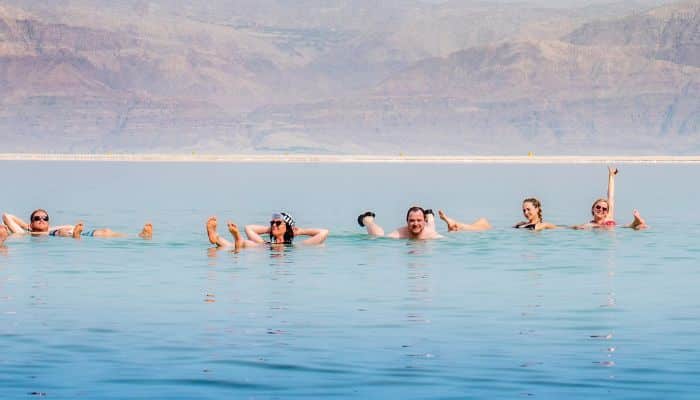
Most people visit the Dead Sea for its therapeutic properties, a tradition prevalent since ancient times.
Psoriasis patients visit the Dead Sea to swim in its salty waters, providing some relief to their skin. Rhinosinusitis patients also come to treat and irrigate purulent secretions from the nasal cavity.
14. Potash mining is the largest industry in the Dead Sea
Scientists recognised the economic viability of the Dead Sea’s rich potassium chloride reserves in 1911. Commercial operations began in 1931, and most of Britain’s potash supplies during the Second World War came from the Dead Sea. After the war ended, Israel and Jordon maintained and expanded this industry.
In the 1950s, they even began to harvest salt and shared the mineral harvests of bromide too. Israel also produces caustic soda and magnesium from the Dead Sea.
15. Dead Sea is shrinking at an alarming rate
Per research data, the Dead Sea is shrinking at a rapid rate. Its surface level is dropping by more than one metre annually, and it’s only half the length of what it was just a century ago. Many leaders call it a ‘geopolitical problem’.
This has happened because water from the Jordon River is diverted and also taken from the sea for nearby developments. Israel and Jordon signed an agreement in 2015 to invest $9 million to stabilise the water level.
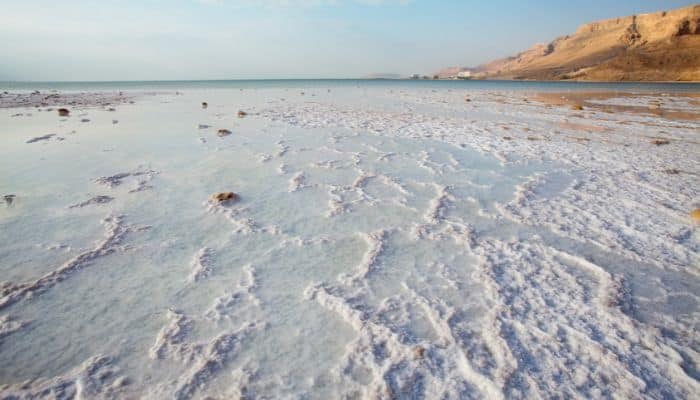
Environmentalists do not support their plan since it may impact the Dead Sea ecosystem. They focus on reducing infrastructural development on its shores and increasing the water flow in the Jordon River.
16. Dead Sea rocks were used by Egyptians in their mummification process
Another interesting feature of the Dead Sea is that it spits small pebbles and asphalt blocks from deep seeps found on its floor onto the surface. Ancient Egyptians found them quite useful and transported them to Egypt for using them in the process of mummification.
You might also like to read-
- 10 Major Ports On The Red Sea
- 15 Interesting Facts About The Bermuda Triangle
- Major Ports And Terminals in Moldova
- 10 Major Caspian Sea Ports
- 12 Major Gulf Of Bothnia Facts
Disclaimer :
The information contained in this website is for general information purposes only. While we endeavour to keep the information up to date and correct, we make no representations or warranties of any kind, express or implied, about the completeness, accuracy, reliability, suitability or availability with respect to the website or the information, products, services, or related graphics contained on the website for any purpose. Any reliance you place on such information is therefore strictly at your own risk.
In no event will we be liable for any loss or damage including without limitation, indirect or consequential loss or damage, or any loss or damage whatsoever arising from loss of data or profits arising out of, or in connection with, the use of this website.
Do you have info to share with us ? Suggest a correction
Disclaimer :
The information contained in this website is for general information purposes only. While we endeavour to keep the information up to date and correct, we make no representations or warranties of any kind, express or implied, about the completeness, accuracy, reliability, suitability or availability with respect to the website or the information, products, services, or related graphics contained on the website for any purpose. Any reliance you place on such information is therefore strictly at your own risk.
In no event will we be liable for any loss or damage including without limitation, indirect or consequential loss or damage, or any loss or damage whatsoever arising from loss of data or profits arising out of, or in connection with, the use of this website.

About Author
Zahra is an alumna of Miranda House, University of Delhi. She is an avid writer, possessing immaculate research and editing skills. Author of several academic papers, she has also worked as a freelance writer, producing many technical, creative and marketing pieces. A true aesthete at heart, she loves books a little more than anything else.
Latest Maritime Knowledge Articles You Would Like:
Daily Maritime News, Straight To Your Inbox
Sign Up To Get Daily Newsletters
Join over 60k+ people who read our daily newsletters
By subscribing, you agree to our Privacy Policy and may receive occasional deal communications; you can unsubscribe anytime.



